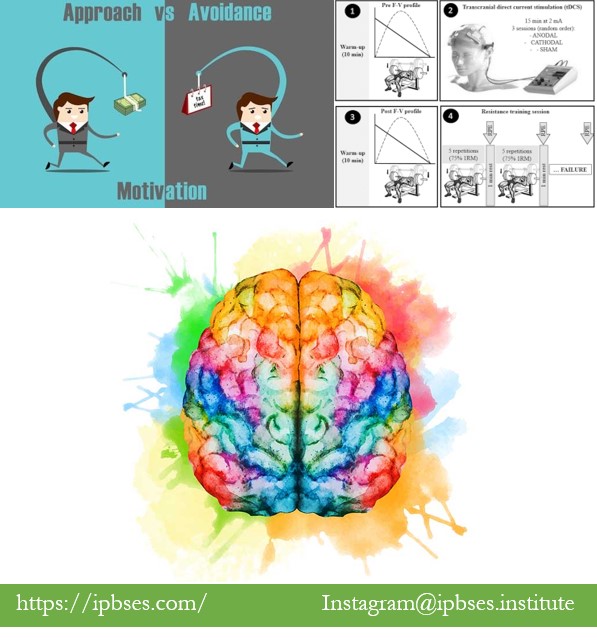پژوهشگران دانشگاه هامبورگ در کشور آلمان در پژوهشی مقایسهای به بررسی تاثیر اجرای tDCS آندی چپ و راست بر افزایش انگیزش افراد پرداختند.
روش:
در این پژوهش شبهآزمایشی، ۶۰ داوطلب راست دست که از نظر عصبروانشناختی سالم بودند با دامنه سنی ۱۸ تا ۳۵ سال شرکت نمودند. هر داوطلب در دو جلسه دریافت tDCS آندی شرکت نمود که فاصله بین دو جلسه حداقل ۷ روز بود. پدهای بکار رفته اسفنجی، مرطوب با آب نمک و به ابعاد ۷ سانتیمتر در ۵ سانتیمتر بودند.
محل قرارگیری آند روی DLPFC چپ و نقطه F3 از سیستم ۱۰-۲۰ بود. کاتد روی ناحیه فوق حلقوی راست قرار گرفت. مدت هر جلسه ۲۰ دقیقه و شدت جریان ۱ میلی آمپر بود. سنجش میزان انگیزش از طریق تکلیف تلاش صرف شده برای پاداش (EEfRT) بود.
نتایج:
- تحریک مغزی کرتکس پیشانی چپ با tDCS آندی منجر به افزایش درصد انتخاب تکالیف سخت (HTC) در فعالیتهای با احتمال کم پاداش میشود.
- تحریک کرتکس پیشانی چپ با tDCS آندی منجر به افزایش درصد انتخاب تکالیف سخت (HTC) در فعالیتهای با میزان بالای پاداش میشود.
راهبردهای کارکردی:
- با توجه به افزایش انگیزش بواسطه کاربرد tDCS آندی در DLPFC چپ در موقعیتهای با احتمال کم پاداش بیرونی و عینی، میتوان از این روش برای تسریع فرآیندهای ترک در انواع رفتارهای اعتیادی سود برد.
- استفاده از tDCS آندی در DLPFC چپ میتواند با کمک به معتادان در کنترل ولع در افزایش انگیزش برای ترک موثر باشد.
- در افراد سالم، بویژه برای ایجاد انگیزشهای تحصیلی، ورزشی و شغلی، و تمرکز بر اهداف میتوان از tDCS آندی استفاده کرد.
- نکته مهم در کاربرد نتایج این پژوهش، نبود بررسی پیگیری بعد از بازه زمانی مناسب (۱۲هفته) برای مشخص ساختن میزان پایداری مداخله است. به این معنا که ممکن است صرفاً این تاثیرات موقت بوده و برای حفظ آنها بطور مداوم لازم به اعمال tDCS باشد.
هشدار: عوارض و پیامدهای کاربرد طولانی مدت tDCS هنوز در هیچ پژوهش طولی و فراتحلیلی بررسی نشده و بسیاری از کشورها (بخصوص امریکای شمالی شامل کانادا و ایالات متحده امریکا) تا زمان انتشار این مطلب منع استفاده بالینی از این ابزار را دارند.
Left frontal anodal tDCS increases approach motivation depending on reward attributes
Abstract
Background
A growing body of literature indicates a correlation between asymmetrical activity of frontal brain sites and approach vs. withdrawal motivation. Yet the causal status of this relationship is presently unclear. Here we examined the effect of anodal tDCS applied over the left dorsolateral prefrontal cortex (dlPFC) on approach motivation, operationalized as effort allocation during the Effort-Expenditure for Reward Task (EEfRT).
Hypothesis
We expected left frontal anodal transcranial direct current simulation (tDCS) to increase participants’ willingness to allocate more effort during the EEfRT. Based on previous research, we expected this effect to be strongest on trials with low probability of reward attainment.
Methods
۶۰ right-handed neurologically and psychologically healthy participants (63% female) aged 18–۳۵ were tested in a counterbalanced within-subject design. Participants were invited to our lab twice to complete two 15-min blocks of the EEfRT on each study day, randomly assigned to either an anodal tDCS or a SHAM condition.
Results
No main effect of stimulation condition was found, however the interactions of stimulation condition and both probability of reward attainment and reward magnitude reached significance. These interactions indicated that left frontal anodal tDCS specifically increased the percentage of hard task choices (HTC) in trials with low probability of reward attainment and in trials with high reward magnitude.
Discussion
The observation of an increasing effect of left frontal anodal tDCS on effort expenditure for reward as indicated by HTC supports the idea of a causal relationship between asymmetric activity of frontal brain sites and approach motivation and hints at moderating effects of task-features on the effects of tDCS.
Keywords
Anodal tDCS, Frontal asymmetry, Approach motivation, EEfRT, Reward attributes
لینک منبع پیشنهادی برای مطالعه بیشتر  (further reading)
(further reading)




